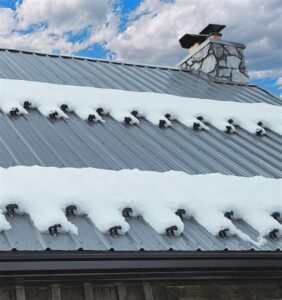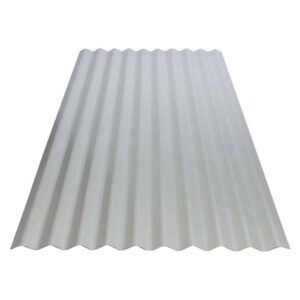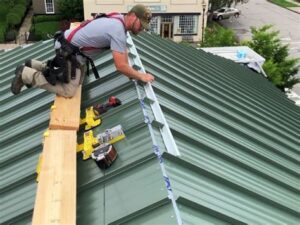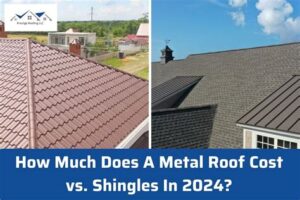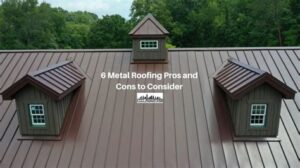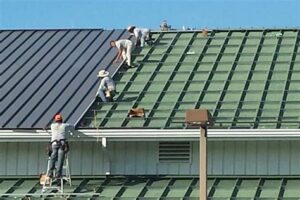Are you planning to install a metal roof but concerned about the costs? You’re not alone! Many homeowners are looking for ways to save money while ensuring a durable and attractive roofing solution. In this article, we’ll guide you through the intricacies of installing a minimum roof pitch for a metal roof, helping you understand the essential considerations and pitfalls to avoid. From choosing affordable materials to comparing DIY installation costs versus hiring a professional contractor, we’ll provide practical insights to optimize your budget. Additionally, we’ll explore strategies to maximize energy efficiency, leading to long-term savings on utility bills. Get ready to make informed decisions and turn your roofing project into a financially savvy investment!
Understanding Minimum Roof Pitch for Metal Roof Installation
When considering a metal roof installation, understanding the minimum roof pitch is crucial. The pitch of a roof refers to its slope, typically expressed as the ratio of vertical rise to horizontal run. For metal roofs, a minimum pitch is necessary to ensure proper drainage and performance. A roof pitch that is too low can lead to water pooling, which may cause leaks and damage over time.
Generally, the minimum recommended pitch for metal roofing is around 3:12, meaning that for every 12 horizontal inches, the roof rises at least 3 inches. However, this can vary based on the type of metal roofing material used and the manufacturer’s specifications. It’s advisable to consult local building codes and the specific guidelines provided by your metal roofing supplier.
Choosing the appropriate pitch not only affects the aesthetic appeal of your home but also impacts its long-term durability and maintenance costs. A steeper pitch can provide better runoff and less likelihood of water-related issues, while a shallower pitch may require additional treatments or materials to enhance waterproofing.
To maximize savings during installation, it’s essential to balance the roof’s pitch with the materials selected and the environmental conditions in your area. Proper planning and understanding of the minimum roof pitch will ultimately contribute significantly to a successful metal roof installation.
How To Choose Affordable Materials for Your Metal Roof
Selecting the right materials for your metal roof is crucial not only for the overall aesthetics and durability but also for keeping costs in check. Here are several strategies to ensure you choose affordable materials without sacrificing quality:
By following these strategies on how to choose affordable materials for your metal roof, you can significantly reduce costs while ensuring a sturdy and aesthetically pleasing installation. Remember, careful planning and research go a long way in making informed choices.
Comparing Installation Costs: DIY vs. Hiring a Contractor
When considering how to save money when installing a minimum roof pitch for a metal roof, one of the significant decisions you’ll face is whether to take a DIY approach or hire a contractor. Both options have their distinct advantages and disadvantages that can impact your overall budget and project outcome.
DIY Installation
Opting for a DIY installation can be appealing due to the potential for substantial savings. By doing the work yourself, you eliminate labor costs, which can be a considerable portion of your total expense. However, it’s essential to take into account the necessary tools, safety equipment, and time commitment involved in such a project. If you’re well-versed in roofing techniques, you may find that this approach can save you money while giving you the satisfaction of completing the project yourself.
Advantages of DIY:
- No labor costs
- Complete control over materials and design
- Opportunity to learn new skills
Yet, there are some pitfalls to be aware of:
- Potential for costly mistakes if you lack experience
- Time-consuming process, especially if unforeseen issues arise
- Potential lower quality of work if not executed properly
Hiring a Contractor
On the other hand, hiring a professional contractor can often guarantee more reliable results, especially if you’re not experienced in roofing. Contractors bring expertise, quality materials, and the necessary equipment for the job, reducing the risk of errors that could lead to expensive repairs down the line. While this approach may require a more substantial initial investment, it can save you money in the long run by ensuring proper installation and compliance with local building codes.
Advantages of Hiring a Contractor:
- Expertise and professional quality
- Time-efficient installation
- Included warranties for workmanship and materials
However, it’s important to weigh the downsides too:
- Higher upfront costs due to labor fees
- Less control over the project decisions
When comparing installation costs of DIY vs. hiring a contractor, careful consideration of your skills, budget, and long-term savings is crucial. How to make the right decision ultimately depends on your personal circumstances and the complexity of the project at hand.
Identifying Common Mistakes That Lead to Increased Costs
When installing a metal roof, avoiding common mistakes can save you significant amounts of money. Understanding these pitfalls will help you in the process of achieving a successful installation while adhering to your budget. Here are some key errors to watch out for:
By being mindful of these common mistakes, you can better execute your project and make informed decisions that ultimately save you money. Remember, how to avoid these pitfalls is key to a successful metal roof installation.
Maximizing Energy Efficiency to Save Money Long-Term
When considering how to save money during your metal roof installation, one of the most effective strategies is to focus on maximizing energy efficiency. A well-installed metal roof can significantly reduce your energy bills by offering better insulation and reflecting solar heat. Here are several key strategies to enhance the energy efficiency of your roof:
- Invest in Reflective Coatings: Applying cool metal roof coatings helps to reflect sunlight and can lower your roof’s temperature, reducing cooling costs during hot months.
- Consider Insulation: Proper insulation is crucial. Use high R-value insulation materials beneath your metal roof to minimize heat transfer and maintain consistent indoor temperatures.
- Ventilation Systems: Incorporating adequate ventilation systems can help control attic temperatures, promoting airflow and preventing overheating, which can lead to high energy consumption.
- Energy-Efficient Windows: Combine your metal roofing with energy-efficient windows to prevent heat loss in the winter and reduce heat gain in the summer.
- Solar Panels: If feasible, consider installing solar panels. Metal roofs are durable and can support the weight of solar installations, potentially leading to significant savings on your energy bills in the long run.
By implementing these strategies, you can maximize the energy efficiency of your metal roof and enjoy long-term savings. Not only does this approach help reduce operation costs, but it also enhances the overall lifespan and performance of your roofing system, making it a wise investment for any homeowner looking to save money effectively.
Frequently Asked Questions
What is the minimum roof pitch for a metal roof?
The minimum roof pitch for a metal roof typically ranges from 2:12 to 3:12, depending on the type of metal used and specific manufacturer recommendations.
How can I save money on materials when installing a metal roof?
Consider purchasing materials in bulk, seeking out clearance sales, or choosing less expensive metal options, such as galvanized steel over premium metals.
Are there any DIY options to reduce installation costs?
Yes, if you have the necessary skills and tools, you can tackle parts of the installation yourself, such as removing the old roof or installing underlayment.
What factors should I consider when choosing a roofing contractor?
Look for contractors with good reviews, fair pricing, proper licensing, insurance, and experience specifically in installing metal roofs.
Can the season affect the cost of installing a metal roof?
Yes, demand for roofing services often peaks in spring and summer, which can inflate prices. Installing during the off-peak season can lead to savings.
How does proper maintenance impact the longevity and cost of a metal roof?
Regular maintenance can prevent costly repairs and extend the lifespan of a metal roof, ultimately saving you money over time.
What are some common mistakes to avoid during installation?
Common mistakes include improper installation of fasteners, neglecting underlayment, and failing to account for proper drainage, all of which can lead to leaks and increased costs.
